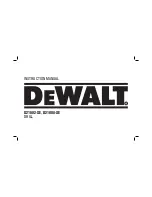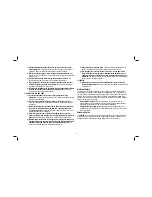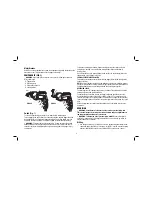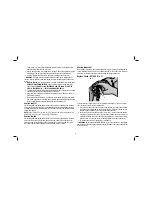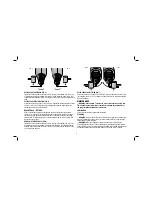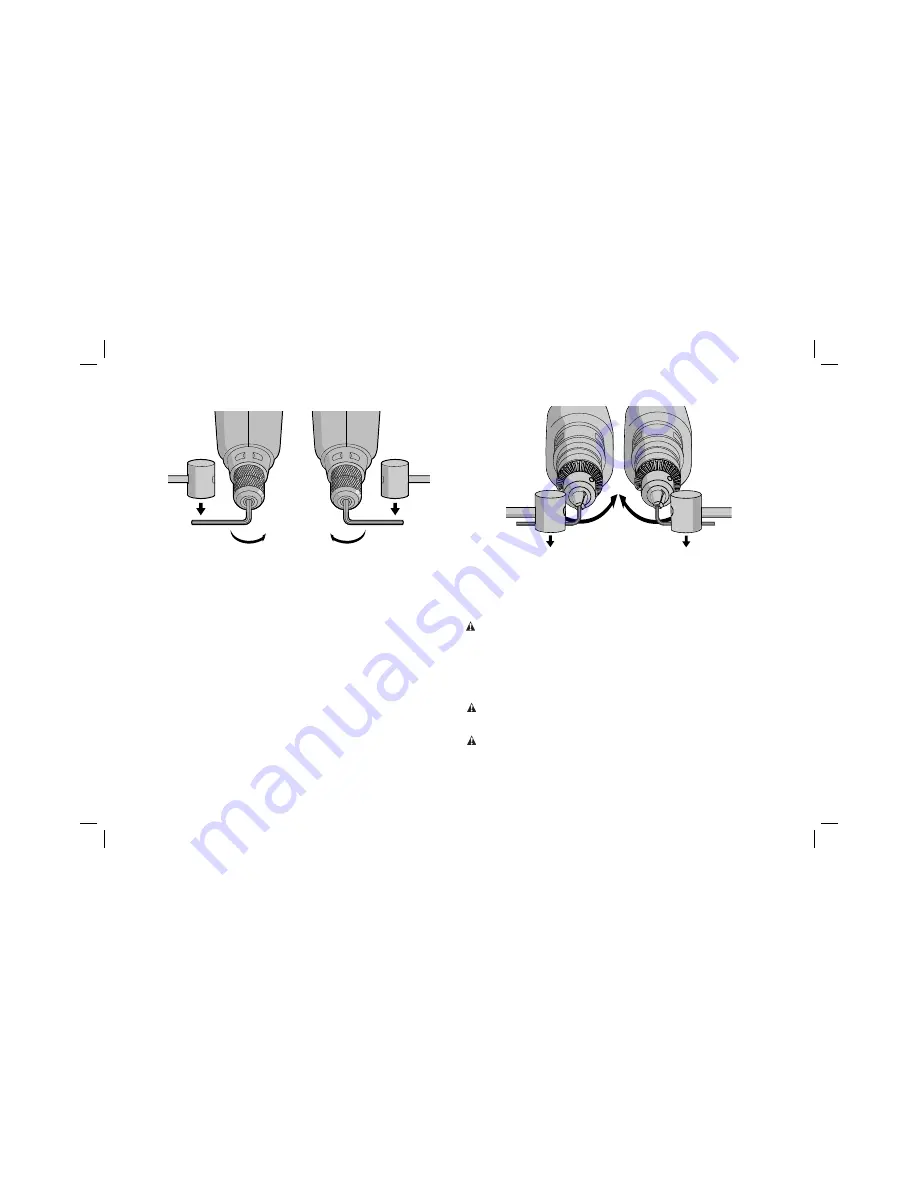
6
FIG. 5
FIG. 4
KEYLESS CHUCK REMOVAL (FIG. 4)
Tighten the chuck around the shorter end of a hex key (not supplied) of 6 mm (1/4")
or greater size. Using a soft hammer or piece of wood, strike the longer end in the
counterclockwise direction. This will loosen the chuck so that it can be unscrewed by
hand.
KEYLESS CHUCK INSTALLATION (FIG. 5)
Screw the chuck on by hand as far as it will go. Tighten the chuck around the shorter
end of a 6 mm (1/4") or larger hex key (not supplied) strike the longer end in the
clockwise direction with a soft hammer.
Keyed Chuck – D21002
Open the chuck jaws by turning collar by hand and insert the shank of the bit about
19 mm (3/4") into chuck. Tighten the chuck collar by hand. Place chuck key in each of
the three holes, and tighten in clockwise direction. It’s important to tighten chuck with
all three holes. To release the bit, turn the chuck counterclockwise in just one hole, then
loosen the chuck by hand.
REMOVAL OF KEYED CHUCK (FIG. 6)
Tighten the chuck around the shorter end of a hex key (not supplied) of 6 mm (1/4")
or greater size. Using a soft hammer, strike the key sharply in the counterclockwise
direction when viewed from the front of the tool. This will loosen the chuck so that it
can be removed by hand.
FIG. 6
FIG. 7
KEYED CHUCK INSTALLATION (FIG. 7)
Screw the chuck on by hand as far as it will go. Insert the shorter end of a hex key
(not supplied) of 6 mm (1/4") or greater size and strike it in the clockwise direction
with a soft hammer.
MAINTENANCE
WARNING: Shock Hazard. To reduce the risk of serious personal injury, turn
tool off and disconnect from power source before making any adjustments or
removing/installing attachments or accessories.
Lubrication
Your power tool requires no additional lubrication.
Cleaning
WARNING:
Blow dirt and dust out of all air vents with clean, dry air at least once
a week. To minimize the risk of eye injury, always wear ANSI Z87.1 approved eye
protection when performing this.
WARNING:
Never use solvents or other harsh chemicals for cleaning the
non-metallic parts of the tool. These chemicals may weaken the plastic materials
used in these parts. Use a cloth dampened only with water and mild soap. Never let
any liquid get inside the tool; never immerse any part of the tool into a liquid.
Summary of Contents for D21002-XE
Page 1: ...D21002 XE D21008 XE DRILL INSTRUCTION MANUAL ...
Page 2: ......
Page 10: ...8 ...
Page 11: ...9 ...

